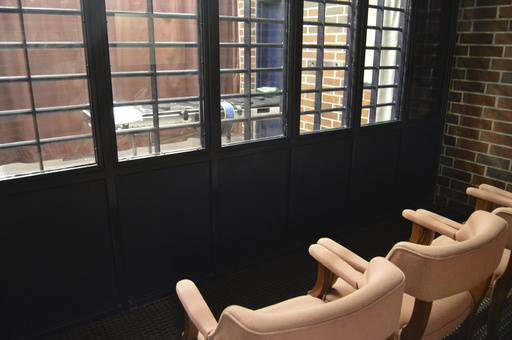COLUMBIA, S.C. — Brad Sigmon, a death row inmate in South Carolina, has opted for execution by firing squad, which is a method not utilized in the United States for the past 15 years. He is scheduled to be executed on March 7, marking him as the first inmate in South Carolina to select this new execution method, as alternatives like lethal injection and the electric chair were also available.
Historically, only three inmates in the U.S. have faced execution by firing squad since the 1976 reinstatement of the death penalty, all of whom were in Utah, with the latest case occurring in 2010. Sigmon, 67, will undergo execution by being secured to a chair, with a hood placed over his head and a target positioned over his heart. A trio of designated shooters will fire from a distance of around 15 feet.
Earlier this month, Sigmon’s legal team requested a postponement of his execution to ascertain details regarding the previous execution of Marion Bowman, who passed on January 31, specifically whether he was administered two doses of pentobarbital and to review his autopsy report. However, the justices denied this request, and it’s uncertain whether Sigmon’s lawyers have received Bowman’s autopsy documentation yet.
According to Sigmon’s attorney, Gerald “Bo” King, Sigmon refrained from selecting the electric chair due to the fear of a painful death, fearing it would “burn and cook him alive.” On the other hand, he expressed concerns about potential complications with lethal injection, referencing the torturous deaths experienced by three individuals recently executed in South Carolina, whom Sigmon knew personally.
The decision to select execution by firing squad stemmed from frustration over South Carolina’s lack of transparency regarding the lethal injection procedure. Sigmon’s attorney stated that, although Sigmon does not wish to cause pain to his family, witnesses, or execution team, he felt compelled to choose the method he perceives as the least harmful due to the state’s overly secretive practices.
Sigmon was convicted of the brutal murders of his ex-girlfriend’s parents in 2001 using a baseball bat. Reportedly, he moved between rooms to inflict fatal blows on each victim before ultimately kidnapping his ex-girlfriend at gunpoint. She managed to escape his vehicle unharmed despite him firing at her.
At 67, Sigmon would be the oldest individual executed in South Carolina since the death penalty was resumed in 1976. His legal team has one last appeal pending with the state Supreme Court, arguing that his trial representation was inadequate; they claim that his attorneys failed to effectively advocate for his mental state or difficult upbringing, which could have elicited mercy from the jury.
Additionally, there remains the potential for Governor Henry McMaster to commute Sigmon’s sentence to life without parole. Sigmon’s attorneys maintain that he has been a model prisoner and highlights the importance of recognizing the possibility of redemption rather than initiating an execution. Historically, no governor in South Carolina has granted clemency since the reinstatement of the death penalty nearly 50 years ago.
In 2022, South Carolina allocated approximately $54,000 to create a designated area for firing squad executions within the death chamber, which is adjacent to the electric chair. Modifications included bulletproof glass for the witness area, a chair designed to collect blood, and a wall providing cover for the shooters. While witnesses will have a view of the inmate’s profile, they will not see the firing squad.
The South Carolina legislature sanctioned the firing squad after corrections officials struggled to acquire necessary drugs for lethal injections, prompting suppliers to withhold them due to publicity risks. While a privacy shielding law followed, the firing squad option was preserved.
Lawyers for Sigmon cited the troubling nature of the recent lethal injections as influencing his decision against that method. Since the state’s switch to administering pentobarbital in lethal doses, witnesses reported that executed individuals took over twenty minutes to be declared dead despite appearing to stop breathing shortly after the injections were administered. The only available autopsy report released thus far pertains to Richard Moore, who received dual doses of pentobarbital shortly apart. The first inmate executed under the new protocol, Freddie Owens, declined an autopsy on religious grounds. Legal experts have suggested that Moore’s execution might have involved conditions akin to drowning, as indicated by the autopsy findings. However, state attorneys assert that fluid accumulation is not unusual during executions involving substantial doses of pentobarbital, maintaining that previous witnesses reported that the inmates were only conscious for a brief period following the commencement of the procedure.
